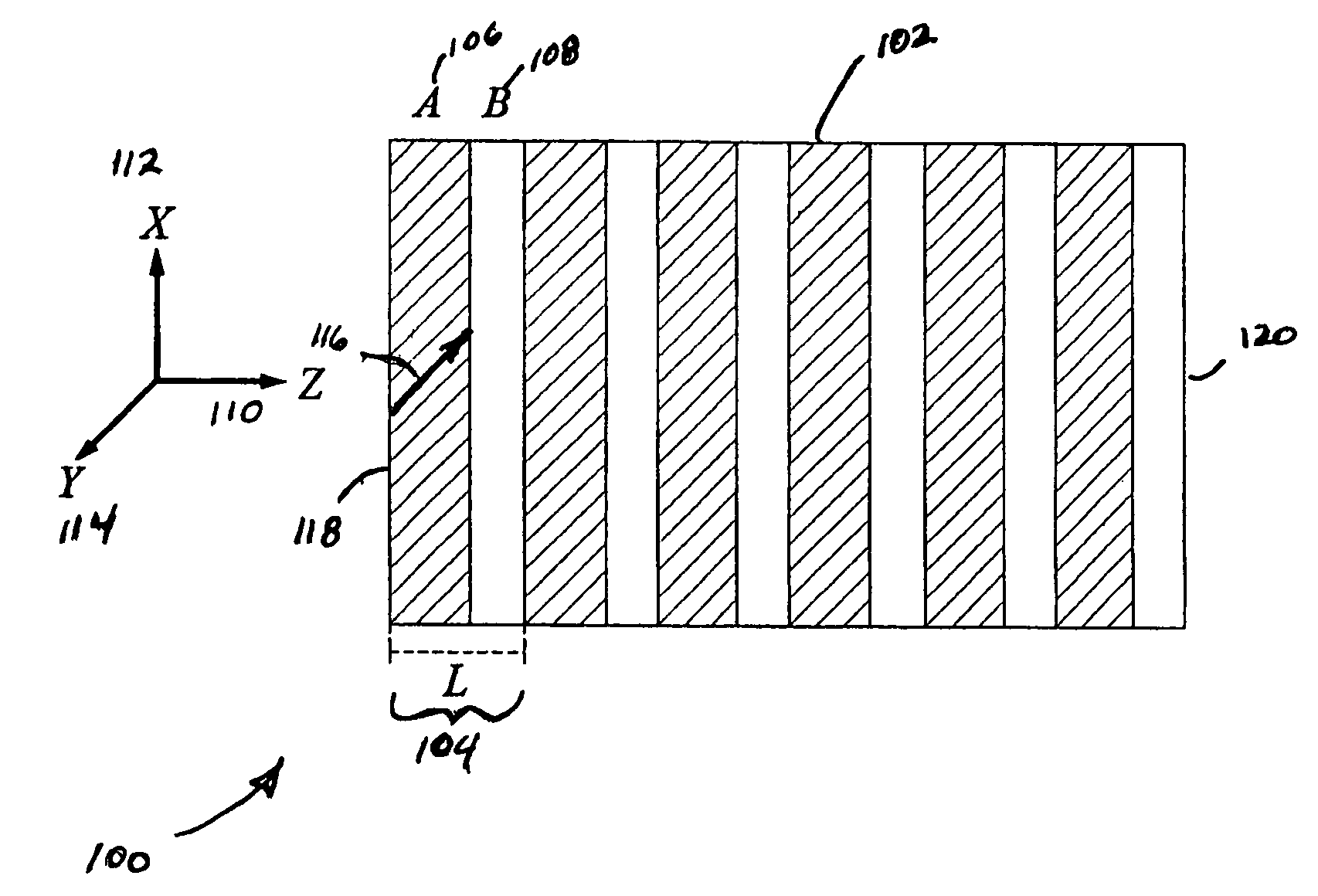Systems and methods for transmitting electromagnetic energy in a photonic device
- Summary
- Abstract
- Description
- Claims
- Application Information
AI Technical Summary
Benefits of technology
Problems solved by technology
Method used
Image
Examples
Embodiment Construction
[0024]The systems and methods described herein provide for a photonic device capable of transmission of electromagnetic radiation with a greatly reduced group velocity at frequencies up to and including the ultraviolet range. More specifically, the photonic device is capable of electromagnetic transmission in at least two different reduced velocity modes, referred to herein as the axially frozen mode and the full frozen mode. The photonic device is preferably a periodic stack, or periodic layered array, of similar multi-layered segments. The photonic device can also have the geometry of a two or three dimensional photonic crystal. Preferably, at least one layer of each segment of the periodic stack is an anisotropic dielectric layer. In the axially frozen mode regime, a substantial portion of an electromagnetic wave, incident upon the surface of the photonic device, can be transmitted within the device and completely converted into a grazing mode with greatly reduced group velocity ...
PUM
 Login to view more
Login to view more Abstract
Description
Claims
Application Information
 Login to view more
Login to view more - R&D Engineer
- R&D Manager
- IP Professional
- Industry Leading Data Capabilities
- Powerful AI technology
- Patent DNA Extraction
Browse by: Latest US Patents, China's latest patents, Technical Efficacy Thesaurus, Application Domain, Technology Topic.
© 2024 PatSnap. All rights reserved.Legal|Privacy policy|Modern Slavery Act Transparency Statement|Sitemap



